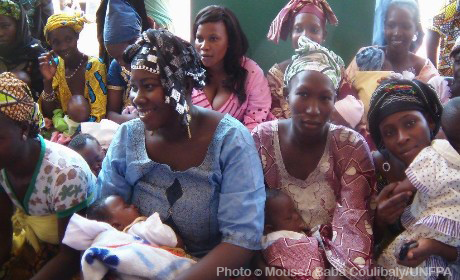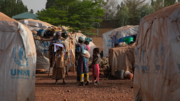Data Menu
-
Country Pages
-
Asia y el Pacífico
- Afganistán
- Bangladesh
- Bután
- Camboya
- China
- India
- Indonesia
- República Islámica del Irán
- República Democrática Popular Lao
- Malasia
- Maldivas
- Mongolia
- Myanmar
- Nepal
- Pakistán
- Estado Independiente de Papua Nueva Guinea
- Filipinas
- Sri Lanka
- Tailandia
- Timor Oriental
- Vietnam
-
Europa Oriental y Asia Central
- Albania
- Armenia
- Azerbaiyán
- Belarús
- Bosnia y Herzegovina
- Georgia
- Kazajstán
- Oficina de Kosovo
- Kirguistán
- República de Moldova
- Macedonia del Norte
- Serbia
- Tayikistán
- República de Türkiye
- Turkmenistán
- Ucrania
- Uzbekistán
-
Estados Árabes
- Argelia
- Yibuti
- Egipto
- Iraq
- Jordania
- Líbano
- Libia
- Marruecos
- Omán
- Palestina
- la República Federal de Somalia
- Sudán
- República Árabe Siria
- Túnez
- Yemen
-
África Oriental y Meridional
- Angola
- Botsuana
- Burundi
- Comoras
- República Democrática del Congo
- Eritrea
- Eswatini
- Etiopía
- Kenya
- Lesotho
- Madagascar
- Malawi
- Mauricio
- Mozambique
- Namibia
- Ruanda
- Seychelles
- Sudáfrica
- Sudán del Sur
- República Unida de Tanzanía
- Uganda
- Zambia
- Zimbabwe
-
América Latina y el Caribe
- Argentina
- Estado Plurinacional de Bolivia
- Brasil
- Chile
- Colombia
- Costa Rica
- Cuba
- República Dominicana
- la República del Ecuador
- El Salvador
- Guatemala
- Haití
- Honduras
- México
- Nicaragua
- Panamá
- Paraguay
- Perú
- Uruguay
- República Bolivariana de Venezuela
- Caribbean (multi-country)
-
África Occidental y Central
- Benin
- Burkina Faso
- Cabo Verde
- Camerún
- República Centroafricana
- Chad
- Congo
- Costa de Marfil
- la República de Guinea Ecuatorial
- Gabón
- Gambia
- Ghana
- Guinea
- Guinea-Bisáu
- Liberia
- Malí
- Mauritania
- Níger
- Nigeria
- Santo Tomé y Príncipe
- Senegal
- Sierra Leona
- Togo
-
Country Menu

UNFPA Mali
Active in Mali since 1973, UNFPA develops programmes to improve the quality of reproductive and sexual health services. With nearly half the population under the age of 15, UNFPA support targets hard-to-reach groups and adolescents in particular. Contraceptive prevalence is low and maternal mortality high. UNFPA also assists with developing reliable demographic data, and advocates for upholding human rights and gender equality, including through the abandonment of female genital mutilation/cutting and all forms of gender-based violence.
Data overview
View more
Población
Población, por grupo de edad, porcentaje
 Población de 0 a 14 años, en porcentaje
Población de 0 a 14 años, en porcentaje Población de 15 a 64, años, en porcentaje
Población de 15 a 64, años, en porcentaje Population aged 65+
Population aged 65+
Salud sexual y reproductiva
Nacimientos atendidos por personal sanitario calificado, porcentaje, 2014-2019
 Nacimientos atendidos por personal sanitario calificado
Nacimientos atendidos por personal sanitario calificado
Planificación familiar
Proportion of demand satisfied with modern methods, women aged 15-49, per cent, 2022
 Modern method
Modern method
Educación
Total net enrolment rate, percent
Gender, Rights, and Human Capital
Prácticas nocivas
Key results of Mali in 2021
View more
Adolescent-friendly Sexual and reproductive health services
Quality assured, adolescent-friendly sexual and reproductive health services were provided in at least 25 per cent of public health facilities
Health services for sexual violence survivors
Essential health services were provided for survivors of sexual violence by at least 60 per cent of public health facilities
Sexual and reproductive health/HIV index
A sexual and reproductive health/HIV integration index was applied
Supply chain management strategy
A costed supply chain management strategy was in place, taking into account the UNFPA/WHO implementation guide on ensuring rights-based contraceptive delivery
Logistics management information system
A logistics management information system was used for forecasting and monitoring sexual and reproductive health commodities
Sexual and reproductive health indicators available
Sexual and reproductive health indicators were collected periodically, and made publically available
Maternal death notification
At least 25 per cent of the estimated maternal deaths were notified
Data on gender-based violence
National systems were in place to collect and disseminate data on the incidence of gender-based violence
Population projections
Publically available population projections at national and subnational levels, disaggregated by age, sex, location were generated
Fistula treatment
30Fistula repair surgeries provided with the support of UNFPA
Life skills programmes for girls
1,800Marginalized girls were reached with health, social and economic asset-building programmes
Advocacy platforms against harmful social norms
50Communities developed advocacy platforms to eliminate discriminatory gender and sociocultural norms which affect women and girls
Child, early and forced marriage
150,000Girls received, with support from UNFPA, prevention, protection services, and/or care related to child, early, and forced marriage
Female genital mutilation
9,540Girls and women received, with support from UNFPA, prevention, protection services, and/or care related to female genital mutilation
Community declarations on harmful practices
211Communities made public declarations to eliminate harmful practices, with support from UNFPA, including child, early and forced marriage and female genital mutilation
Demographic Dividend: Mali
View more
Population Pyramid
females
males
Population in thousands
Esperanza de vida
Total fertility rate
Select year range
Year: 2018
Note: Years 2017 to 2100 are projected data.
i
Source: United Nations, Population Division, World Population Prospects: 2017 Revision
Paneles disponibles para Mali
Noticias
Noticias
El conflicto de Malí se cobra un alto precio entre las mujeres embarazadas en medio de la creciente inseguridad
REGIÓN DE MOPTI, Malí - «Muchas mujeres vienen aquí a dar a luz como último recurso», explica Kadiatou Karembé, partera...

Redes sociales
Tweets from UNFPATürkiye